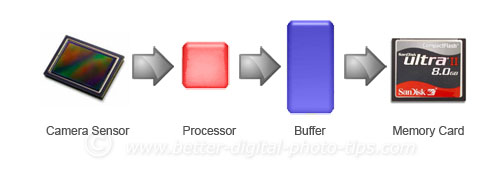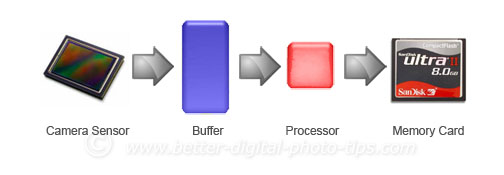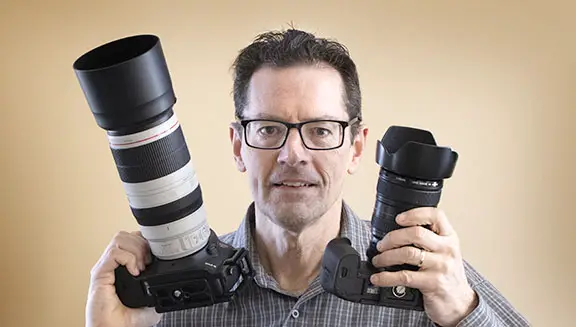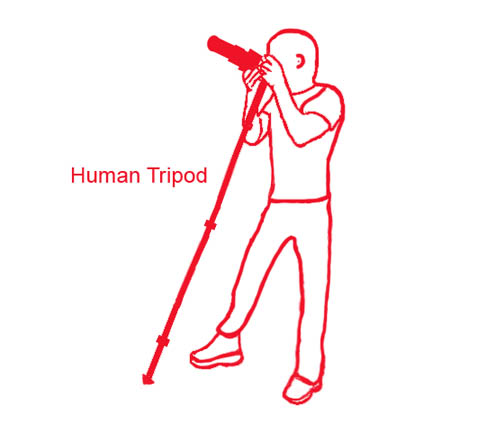HOW TO POSTS: LIGHTING AND COMPOSITION
so, what is camera buffer
And Why memory buffer Matters
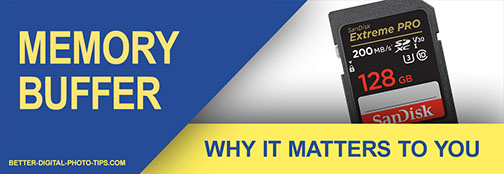
It's important to understand what camera buffer memory is and also when the amount of buffer memory is important. This post will help you understand
Think of your digital camera's memory buffer as a temporary storage tank.
When the shutter button is pressed a large amount of data is created and can't be instantly stored on the camera's durable memory card. The buffer memory holds the data from the photograph before it is transferred or written onto the memory card.
The early models of digital cameras had no memory buffer, so after you took the photo you had to wait for the image to be completely written to the storage card before you could take another.
You will want to know if your digital camera processes the data while the data is written to the storage card. If so, then you can take more photos while the other photos are still being stored.
If you have to wait for the image to be stored first, you may miss a great photograph.

It is most important when you are doing sports photography or if you are shooting in a continuous or burst mode.
Because the price of memory has dropped so drastically, newer cameras generally have plenty of camera buffer. The other key factor is how fast your camera's processor works.
Cameras with larger sensors give us a whole lot more data to handle.
It's similar to your computer that has its data in RAM(random access memory) that hasn't been written permanently to the hard drive. If you have lots of ram and a fast processor, you can accomplish several things at once while information is being saved to your permanent hard drive.
Digital cameras that are built with the processor before the buffer can shoot more photos at a time because they are reduced in size when they are processed. (Even more photos if you reduce the quality setting on your camera)
camera buffer order
Cameras that buffer the images immediately after exposure and before processing can actually shoot more frames-per-second (until the buffer is full).
There are also cameras that have smart buffering, and combine buffering before and after the processing. The data can travel freely in the camera. This is the best way to have a fast burst rate and high capacity for taking photos quickly.
The bottom line: Before you buy a new digital camera, find out how many photos can be shot in a row without having to wait for the buffer to at least partially empty before you can begin shooting again. Focusing mode will also affect the burst rate, so make sure to look for all of the continuous burst rate specs before you buy.
RELATED POSTS YOU MIGHT ENJOY:
Full Frame Sensor. Sensor size can effect the quality of your photo as well as how much data has to be processed by your camera. Here is more information on sensor sizes and the accompanying crop factor.
Memory Card Reviews. Information on what you need to know when considering cameras and memory card choices.
I personally shoot in RAW mode because I don't want my camera to process the image data. I like to have more creative control "after capture" with photo editing software so I use Adobe Photoshop Lightroom to process the images.
RAW files require a lot more camera buffer. This can slow things down if you're shooting sports photography or outdoor portraits where you're not waiting for a flash to recycle.


ABOUT BRUCE LOVELACE
Bruce is the publisher of this website. He is the author of the book "Improve Your Photography Instantly." Read more on Bruce on his Bio Page. He's been known as The Traveling Photographer ever since 1994. Read more about this website.
View some of Bruce's photos on Instagram. Visit the Facebook Page. Watch him on YouTube. Bruce runs photo workshops for kids and adults, and provides one-on-one photography coaching.
Digital Photography Education Location on Google My Business
